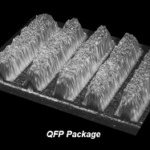How do 3D SPI machines work?
3D SPI machines (Solder Paste Inspection) use advanced optical technologies, like microscopes and lasers, to automatically detect and identify solder paste defects on printed circuit boards (PCBs). This sophisticated equipment enables manufacturers worldwide to enhance production efficiency, reduce costs, and improve the quality of their electronic products.
How do SPI machines work?
As your trusted global partner, ASC International is proud to offer cutting-edge solutions for the global market. Our focus on How do SPI machines work? in this region stems from the burgeoning electronics manufacturing industry and the increasing demand for reliable inspection systems.
General Capabilities
How do 3D SPI machines work? systems utilize a combination of microscopes and other optical inspection technologies, like lasers, to detect even the smallest defects on PCBs. These systems offer:
- High-resolution imaging for detailed analysis
- Conical convergence and illumination for improved visibility
- Automated defect detection to minimize human error
- Customizable configurations for tailored inspection needs
The ASC International How do 3D SPI machines work?
Our System stands as the industry benchmark in Saudi Arabia, providing exceptional accuracy and efficiency. By combining AOI-detected position data with high magnification and wide-field selection, our system enables:
- Rapid flaw identification and photography
- Effortless image zooming via mouse scrolling
How do 3D SPI machines work?
Technical Specifications
Imaging Capabilities:
- High-resolution sensors for low-noise, high-quality images
- State-of-the-art image processing algorithms for complex analysis
Conical Convergence and Illumination:
- Circular, high-brightness illumination area
- Enhanced visual inspection effectiveness and reduced blind spots
Customized System Configuration:
- Multiple stations for various inspection requirements
- Flexible configurations to meet specific production needs
Innovations and Trends in How do SPI machines work?
The industry continues to evolve with new innovations and trends, including:
- Artificial Intelligence (AI) for enhanced defect detection
- Automation for reduced manual intervention
- Cloud-based data management for improved collaboration
Case Study: Implementing How do 3D SPI machines work?
A leading electronics manufacturer in Saudi Arabia implemented our 3D SPI System to streamline their PCB inspection process. The system significantly:
- Reduced defective products by 30%
- Increased production efficiency by 25%
- Enhanced overall product quality
Key Considerations for How do 3D SPI machines work?
Optimizing 3D SPI machines in globally requires careful consideration of:
- Production volume and complexity
- Inspection accuracy requirements
- Budget and investment capacity
Benefits of How do 3D SPI machines work?
Integrating 3D SPI machines work into your manufacturing process offers tangible benefits, such as:
- Improved product quality and reliability
- Reduced production costs
- Increased customer satisfaction
- Enhanced brand reputation
Future Outlook for How do 3D SPI machines work?
The future of How do SPI machines work? holds promise with the emergence of advanced technologies and applications, such as:
- Integration with other inspection systems
- Real-time data analysis for proactive quality control
- Predictive maintenance for improved system uptime
Summary
How do SPI machines work? is a crucial technology for PCB manufacturers in Saudi Arabia and worldwide. By utilizing advanced optical technologies, our System provides unmatched accuracy and efficiency, enabling manufacturers to improve product quality, enhance production efficiency, and reduce costs. As the industry continues to evolve, we believe that 3D SPI machines will remain a cornerstone of the electronics manufacturing process, shaping the future of quality control and innovation.









